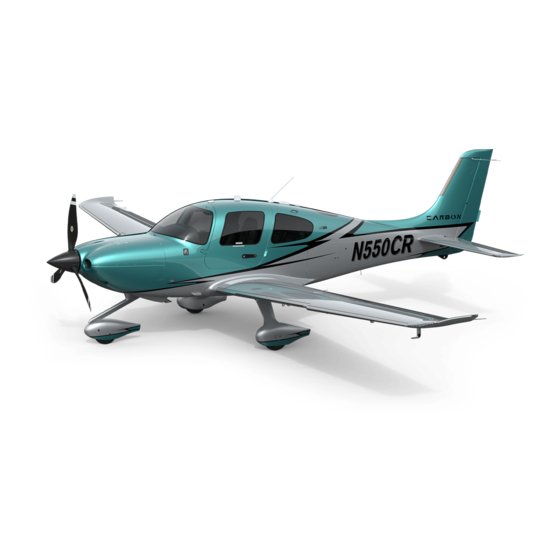
Cirrus Design SR22 Personal Aircraft Manuals
Manuals and User Guides for Cirrus Design SR22 Personal Aircraft. We have 1 Cirrus Design SR22 Personal Aircraft manual available for free PDF download: Information Manual
Cirrus Design SR22 Information Manual (506 pages)
Brand: Cirrus Design
|
Category: Tools
|
Size: 8 MB
Table of Contents
-
-
-
Introduction17
-
Fuel Limits30
-
-
Smoking34
-
-
Placards35
-
-
-
Section 3A73
-
-
Introduction73
-
-
-
-
-
Introduction87
-
-
Taxiing97
-
Takeoff101
-
Normal Takeoff101
-
Climb102
-
Cruise103
-
Cruise Leaning104
-
Descent104
-
Before Landing104
-
Landing105
-
After Landing106
-
Shutdown107
-
Stalls108
-
-
-
Introduction117
-
Flight Planning118
-
Sample Problem118
-
Takeoff119
-
Climb120
-
Cruise121
-
Fuel Required122
-
Landing123
-
-
Stall Speeds130
-
Wind Components131
-
Takeoff Distance132
-
Takeoff Distance134
-
Landing Distance149
-
-
-
Introduction173
-
Airframe174
-
Flight Controls176
-
Elevator System176
-
Aileron System178
-
Rudder System180
-
-
Trim Systems182
-
-
Instrument Panel184
-
Center Console185
-
-
Wing Flaps200
-
Airplane Cabin202
-
Cabin Doors202
-
Seats204
-
-
Landing Gear202
-
Engine209
-
Engine Cooling210
-
Engine Exhaust211
-
Engine Controls211
-
Propeller221
-
Fuel System222
-
Brake System230
-
-
Power Generation233
-
-
-
Strobe Light242
-
Landing Light242
-
-
Reading Lights243
-
-
Pitot Heat Light250
-
-
Autopilot256
-
GPS Navigation259
-
Transponder263
-
Audio System263
-
Hour Meter(S)266
-
Digital Clock267
-
-
-
Introduction275
-
Ground Handling282
-
Servicing288
-
Brake Servicing288
-
Tire Inflation290
-
Oil Servicing291
-
Battery Service297
-
-
-
Introduction497
-
-
-
Deployment Speed499
-
-
-
Door Position501
-
Water Landings502
-
Ground Gusts503
-
Post Impact Fire503
-
-
Advertisement
Advertisement
